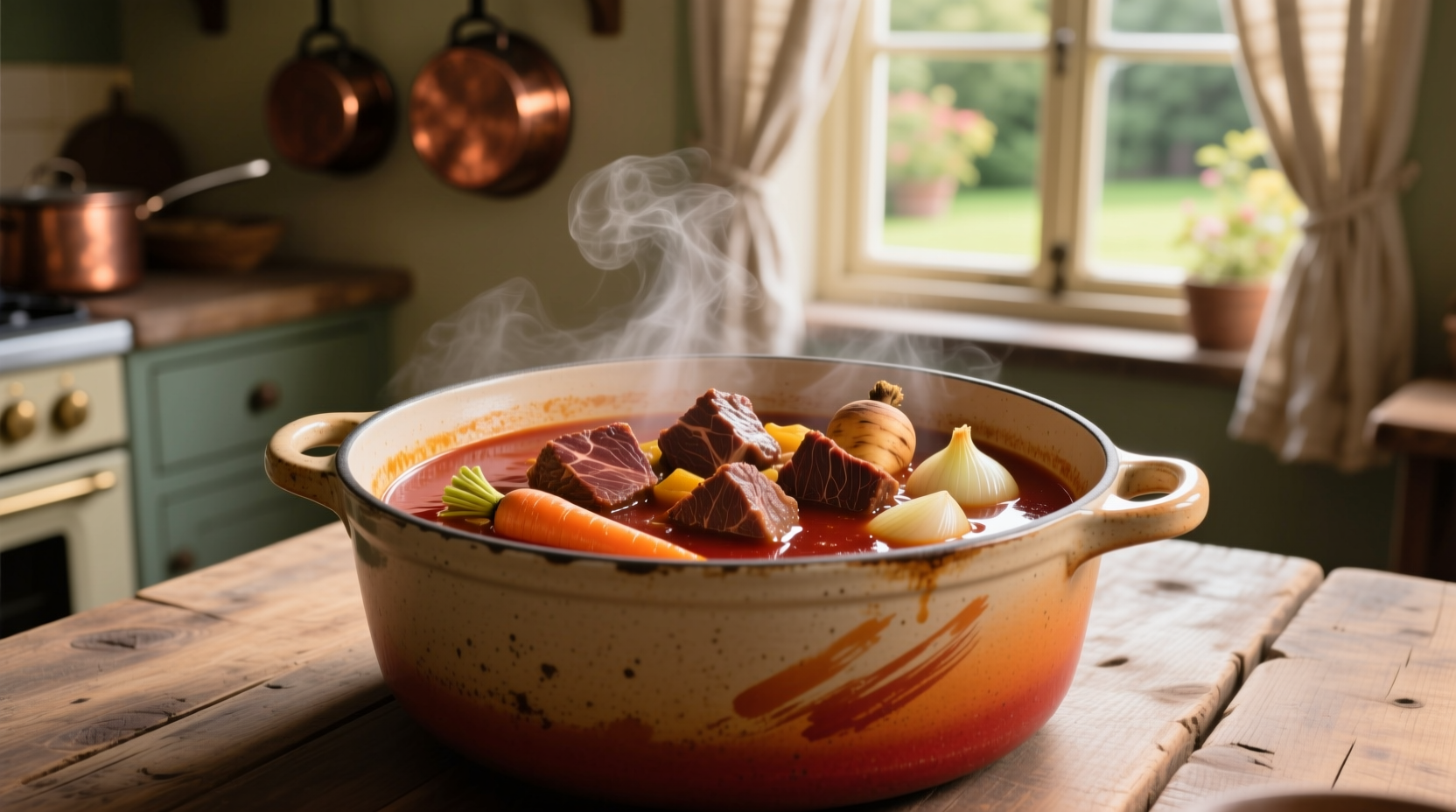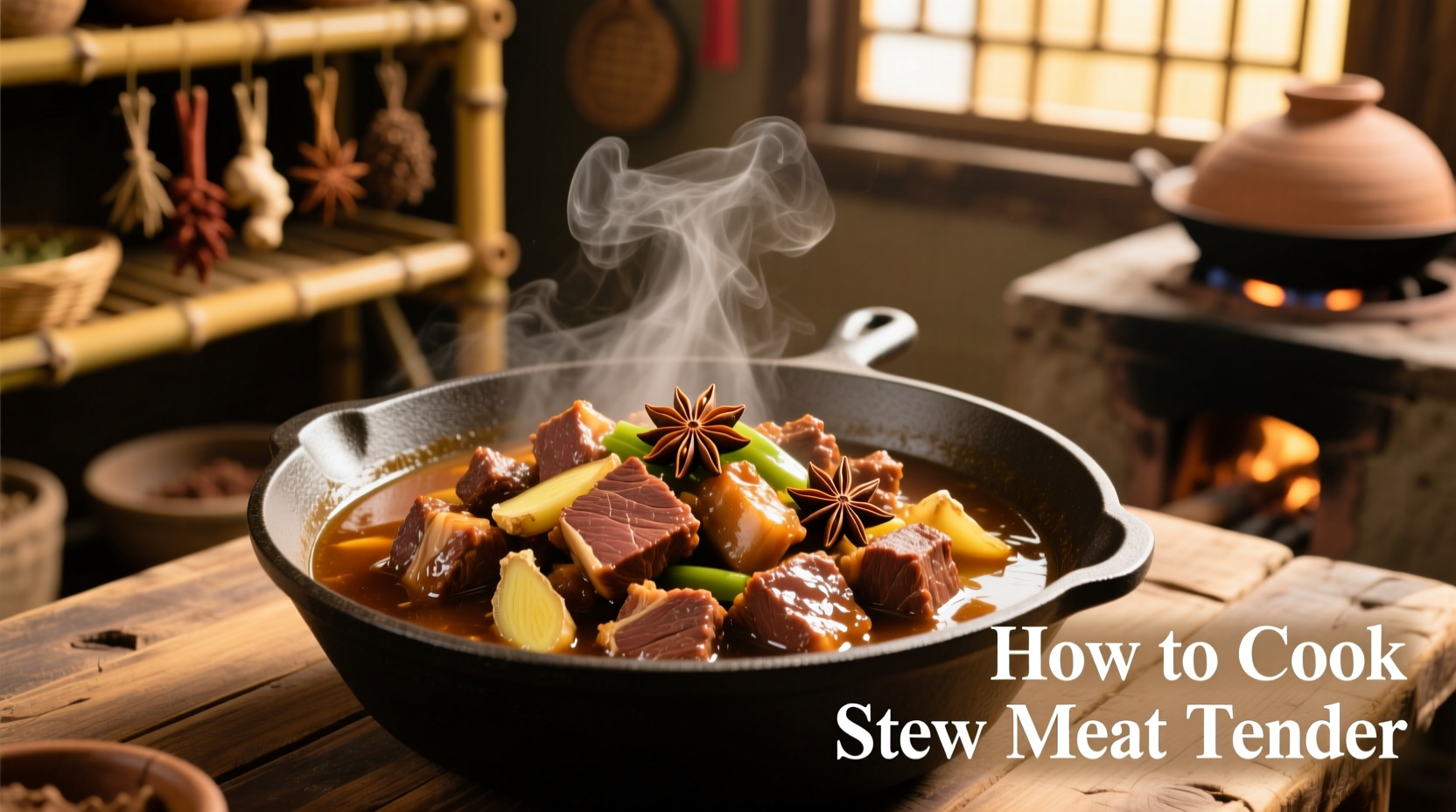Why Your Stew Meat Turns Out Tough (And How to Fix It)
Nothing ruins a comforting pot of stew faster than chewy, rubbery meat. This common kitchen frustration stems from misunderstanding how connective tissue in tougher cuts transforms during cooking. When you cook stew meat tender correctly, those initially tough fibers melt into succulent, flavorful morsels that practically dissolve on your tongue.
Stew meat typically comes from hardworking muscle groups like chuck, round, or brisket—cuts rich in collagen but low in marbling. The magic happens when collagen breaks down into gelatin through a process called hydrolysis. This transformation requires both time and precise temperature control, not just throwing meat in a pot and hoping for the best.
The Science-Backed 5-Step Method for Foolproof Tender Stew
Step 1: Select the Right Cut (Don't Waste Time on Lean Meats)
Not all meats work for stewing. The USDA recommends using "less tender cuts from the chuck, round, brisket, or shank" specifically because they contain the connective tissue needed for proper tenderization. Avoid lean cuts like sirloin or tenderloin—they'll turn dry and stringy.
Look for well-marbled meat with visible connective tissue. These areas contain the collagen that will transform into gelatin during slow cooking. Your butcher can help identify the best cuts available that day.
Step 2: Master the Critical Browning Process
Proper browning isn't just about color—it creates complex flavor compounds through the Maillard reaction. But many home cooks make these critical mistakes:
- Overcrowding the pan (lowers temperature and steams instead of sears)
- Not drying meat thoroughly before browning
- Moving meat too soon (prevents proper crust formation)
For optimal results, pat meat cubes completely dry, work in batches, and wait until a proper crust forms before flipping. This foundational step significantly impacts final tenderness.
Step 3: Maintain the Perfect Simmer Temperature
This is where most stews fail. The American Chemical Society explains that collagen converts to gelatin most efficiently between 160-205°F (71-96°C). Exceeding this range causes muscle fibers to contract excessively, squeezing out moisture.
| Cooking Temperature | Collagen Conversion Rate | Resulting Texture |
|---|---|---|
| Below 140°F (60°C) | Negligible | Tough, chewy meat |
| 160-180°F (71-82°C) | Optimal | Melt-in-your-mouth tenderness |
| Above 205°F (96°C) | Rapid but damaging | Dry, stringy texture |
Use a reliable thermometer to maintain this sweet spot. Your liquid should show only occasional bubbles breaking the surface—not a vigorous boil.

Step 4: Respect the Required Time (No Shortcuts)
Time is non-negotiable in the tenderization process. The Culinary Institute of America's research shows these minimum time requirements for proper collagen breakdown:
- Beef chuck: 2-3 hours
- Beef round: 2.5-3.5 hours
- Beef brisket: 3-4 hours
These times assume proper temperature control. Rushing the process guarantees tough results. Set a timer and resist the urge to check frequently—each lid lift drops the temperature significantly.
Step 5: The Critical Resting Period
Never serve stew immediately after cooking. Allow it to rest, covered, for at least 15-20 minutes. During this time, residual heat continues the tenderizing process while fibers reabsorb some cooking liquid. For even better results, refrigerate overnight—the flavors meld and residual enzymes continue breaking down fibers.
Troubleshooting Common Stew Meat Problems
"I followed everything but my meat is still tough!"
Three likely culprits:
- Temperature too high: Check if your stew was actually simmering gently
- Insufficient cooking time: Some cuts require longer than standard guidelines
- Acid added too early: Tomatoes or wine added at the beginning can prevent tenderization
Solution: Return to low heat with additional liquid and continue cooking in 30-minute increments until tender.
The pH Factor: How Acidity Affects Tenderness
Food science research from the Journal of Food Science shows that acidic ingredients (like tomatoes, wine, or vinegar) can actually slow down collagen breakdown when added too early. For best results, add acidic components during the last hour of cooking. This explains why many traditional stew recipes incorporate wine or tomatoes after the meat has already tenderized.
Pro Tips for Next-Level Stew Tenderness
- Pre-salt technique: Salt meat 24 hours before cooking to improve moisture retention
- Enzyme boost: Add a small amount of grated ginger or kiwi (which contain natural tenderizing enzymes)
- Alcohol advantage: Use dark beer instead of water—the malt sugars enhance browning and tenderization
- Vegetable timing: Add root vegetables in the last 45 minutes to prevent mushiness
Remember that how to cook stew meat tender successfully requires patience and precision, not complicated techniques. Master these fundamentals and you'll never serve tough stew again.











 浙公网安备
33010002000092号
浙公网安备
33010002000092号 浙B2-20120091-4
浙B2-20120091-4